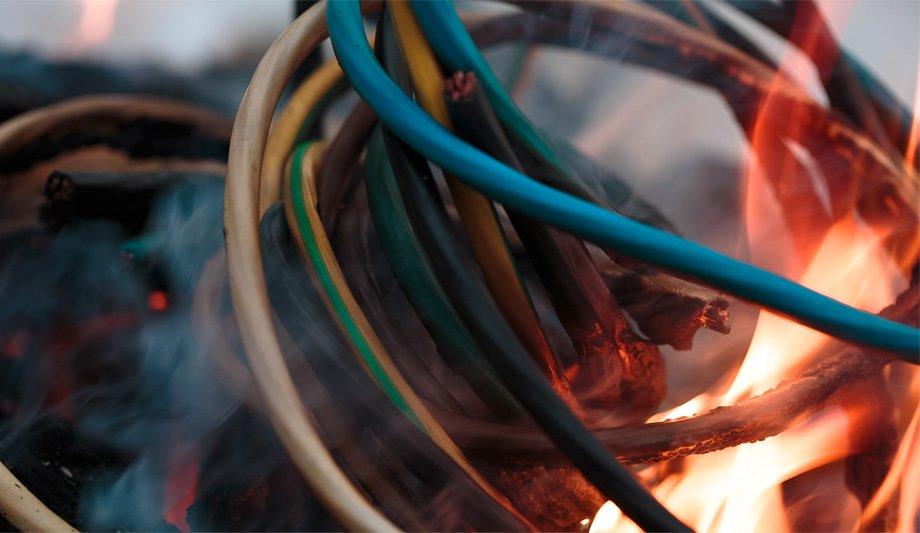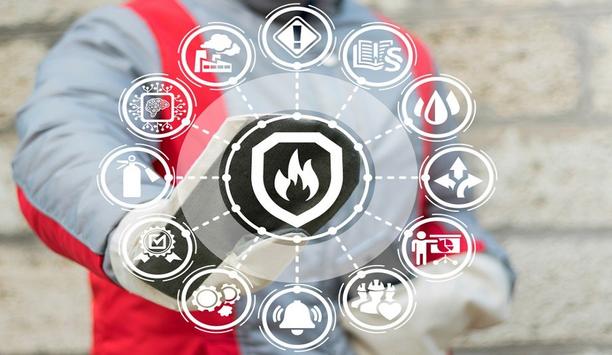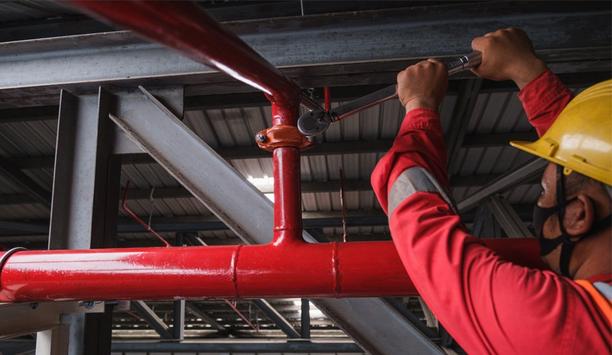Electric wiring systems are mostly hidden and embedded in the construction, ceiling spaces, riser shafts, or wall cavities. Cables are installed in buildings by many different trades for different applications and often in polymeric conduit and ducting systems. What is not often realized is that the many miles of cables and many tons of plastic polymers which make up the wiring system can represent a major fixed fire load in a building.
Fire Spread & Flame Retardance
Most common flexible cables are made from hydrocarbon (oil) based polymers. These base polymers are not usually flame retardant and have high calorific values, so cable manufacturers add chemicals to make them more suited to electrical cable use.
Halogen Additives
Halogenated polymers have a negative side effect because in the fire they release halogens as toxic halides
Halogens like Chlorine are particularly good additives that help retard flame propagation and don’t significantly impact the dielectric properties of the polymer so halogens are used in both cable insulations and cable sheaths.
These halogenated polymers (example: PVC) also have a negative side effect because in the fire they will release the halogens as extremely toxic halides and when combined with the moisture in the eyes, mouth, and lungs are very irritant. Often standard PVC cables will also release large amounts of acrid smoke.
Non-Halogenated Materials
Often, designers realize the dangers of fire spread, halogen, and toxic gasses, plus the smoke released from cables in the fire so they specify cables to have ‘Halogen Free’, ‘Flame Retardant’, and ‘Low Smoke’ properties.
For these cases, cable manufacturers need to use other non-halogenated materials, mostly with flame retarding fillers like alumina-trihydrate (ATH).
Electric And Mechanical Properties
Halogen Free flame-retardant cables most often use an unfilled or less filled polymer like Polyethylene
While effective in retarding flame propagation, these fillers often negatively affect the polymer by reducing dielectric performance or affecting mechanical & water resistance.
For this reason, additives like ATH are mostly used only in cable jackets. Halogen Free flame-retardant cables most often use an unfilled or less filled polymer like Polyethylene (PE or XLPE) or EPR for the insulation which has good electric and mechanical properties but may not be very flame retardant.
Fire Propagation Performance
Often the best flame-retardant cables are halogenated because both the insulation and outer jacket are flame retardant but when we need Halogen Free cables, we find it is often only the outer jacket that is flame retardant and the inner insulation is not.
Testing Under Overload Conditions
This has significance because while cables with a flame-retardant outer jacket may pass flame retardance tests with an external flame source, (BS EN 60332-1, BS EN 60332-3) the same cables when subjected to high overload or prolonged short circuits have proved in university tests to be highly flammable and can even start the fire under uncleared short-circuit or overload conditions.
This effect is known and was published by Nexans/Olex Cables Australia at the 8th International Conference on Insulated Power Cables (Jicable’11, 19-23 June 2011, Versailles, France). What this means is your flame-retardant cables may not be flame retardant under uncleared short circuit or overload conditions.
Intrinsic Temperature Change
BS 7671 and IEC 60364-5-52 have rating tables allowing some cable designs to operate up to 90°C
In the UK, EU, and many other countries, BS 7671 and IEC 60364-5-52 have current rating tables allowing some cable designs to operate at conductor temperatures up to 90°C.
Whilst technically acceptable for the cables, what has not been fully considered by is the intrinsic change this cable operating temperature may have on the cable’s flammability.
Conducting Tests At Operating Temperature
Where cables are required to be flame retardant to IEC 60332-3-22/23/24, it is concerning these tests are not conducted on cable samples preconditioned to the rated operating temperature of the cable, but rather commencing at room temperature.
It is well known the hotter a material is the more easily it will burn so designers and users of cables that claim to meet these standards may be surprised to learn their cables might not be flame retardant at all when installed and used at their rated operating temperature.
The Primary Importance of Fire Load
Many countries around the world are moving to greater use of Halogen Free and Flame Retardant (HFFR) cables in the pursuit of increased building safety.
Whilst an admirable motive, the reality can be rather different: In asking for both flame retardant and halogen-free properties, cable manufacturers often need to compromise between high flame retardance with halogens or reduced flame retardance without halogens.
Polymers
Cable makers often choose polyethylene because it is easy to process and cheap, however, it has a high fire load
To provide halogen-free cables, cable makers most often choose polymers like polyethylene (PE & XLPE) because it is easy to process and cheap, however, although polyethylene is halogen-free it has a naturally high fire load.
The following table compares the fire load in MJ/Kg for common cable insulating materials against some common fuels. The Heat Release Rate and volatility in the air for these materials will differ but the fuel added to a fire per kg and the consequential volume of heat generated and oxygen consumed is relative.

Fire Safety
When considering fire safety in cable design, we need to understand the most important factors: Fire experts tell us most fire-related deaths in buildings are caused by smoke inhalation, temperature rise, and oxygen depletion or by trauma caused by jumping in trying to escape these effects.
Notably, the most common cause of death in building fires is Smoke inhalation with asphyxia due to CO (Carbon Monoxide) although HCN (Hydrogen Cyanide) is becoming more common with the increasing use of man-made and lightweight synthetic building materials. Notably, neither is a Halogen gas.
Smoke
Highly flame-retardant cables with a high oxygen index will help here because they may limit the fire spread
The first and most important aspect of smoke is how much smoke? Typically, the larger the fire the more smoke is generated so anything we can do to reduce the spread of fire will also correspondingly reduce the amount of smoke.
Highly flame-retardant cables with a high oxygen index will help here because they may limit the fire spread.
Flammable Gasses
Smoke will contain particulates of carbon, ash, and other solids, liquids, and gasses, many are toxic and combustible.
In particular, fires in confined areas like buildings, tunnels, and underground environments cause oxygen levels to drop near the fire source and this contributes to incomplete burning and smoldering which can produce increased amounts of smoke and toxic by-products including CO (Carbon Monoxide). As we know the presence of halogenated materials will release toxic halides like Hydrogen Chloride together with many other toxic and flammable gasses in the smoke.
IEC Smoke Tests
For this reason, common British, and IEC smoke tests (BS EN 61034-2) are conducted by burning cable samples in large 3-meter3 chambers with an alcohol fuel and plenty of air.
This can provide very misleading smoke figures because complete burning in flame often releases far less smoke than partial incomplete burning or smoldering which is likely in practice.
Low Smoke Cables
There are no smoke tests done on cables subjected to heating under short circuit or overload conditions
There are no smoke tests done on cables subjected to heating under short circuit or overload conditions which for some common “Halogen Free” insulation materials, give off significantly more smoke than in flame.
Simply specifying low smoke cables to meet common British, IEC standards and then thinking this will provide a low smoke environment during a real fire may give comfort to the specifiers and authorities but unfortunately in practice be of little help for the people involved.

Halogens, Toxicity, Oxygen Depletion, and Temperature Rise
It is concerning that the UK, Europe, and many other countries adopt the concept of halogen-free materials without properly addressing the subject of toxicity. Halogens released during combustion are extremely toxic but so too is carbon monoxide and this is not a halogen gas.
It is common for specifications to call for halogen-free cables and because of this, encourage the use of Polyethylene because it is halogen-free.
Polyethylene And Carbon Monoxide
Burning polyethylene will not only generate almost 3 times more heat but also consume almost 3 times more oxygen
Burning polyethylene will generate almost 3 times more heat than an equivalent PVC cable. This means that burning polyethylene will not only generate almost 3 times more heat but also consume almost 3 times more oxygen and can produce large amounts of Carbon Monoxide, especially with partial or incomplete burning.
Given that it is carbon monoxide that is statistically responsible for most toxicity deaths in fires this situation is at best alarming. (Carbon Monoxide is a colorless and odorless toxic gas that inhibits the blood hemoglobin from absorbing oxygen. Prolonged exposure results in asphyxiation).
Heat Of Combustion
The fuel elements shown in the table indicate the amount of heat that will be generated by burning 1kg of the common cable insulations tabled. Certainly, this volume of heat will accelerate the burning of other adjacent materials and may help spread the fire in a building but importantly, to generate the heat energy, oxygen needs to be consumed.
The higher the heat of combustion (MJ/Kg) the more oxygen is needed, so choosing insulations (even if Halogen Free) with high fuel elements is adding significantly to at least four of the primary dangers of fire to humans: Temperature rise, Oxygen depletion, Toxic gas emission, and Flame spread.
Conclusion
The popularity of “Halogen Free” properties while ignoring the other toxic elements of fire, and the correlation to smoke, heat, and oxygen depletion is a clear admission we do not understand the subject well, nor can we easily define the dangers of combined toxic elements or human physiological response to them.
It is important, however, that we do not continue to design with only half an understanding of the problem. While no perfect solution may exist for organic-based electric cables, we can certainly minimize these critically important effects of fire risk with a more holistic understanding. To this end commercially available non-organic cable systems can provide a more holistic solution to the polymeric HFFR cable paradox.
















